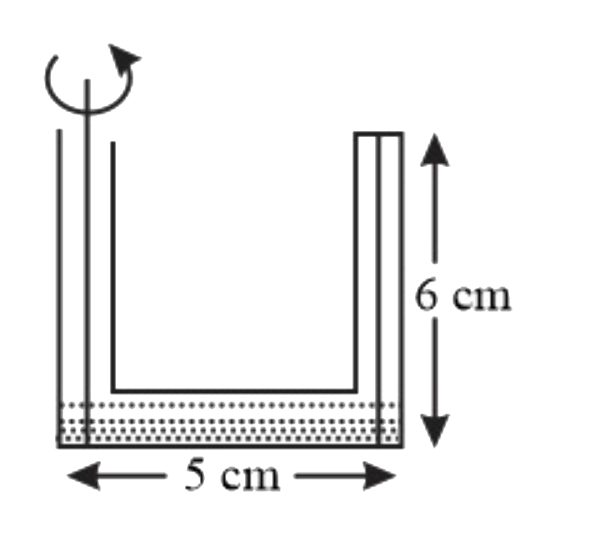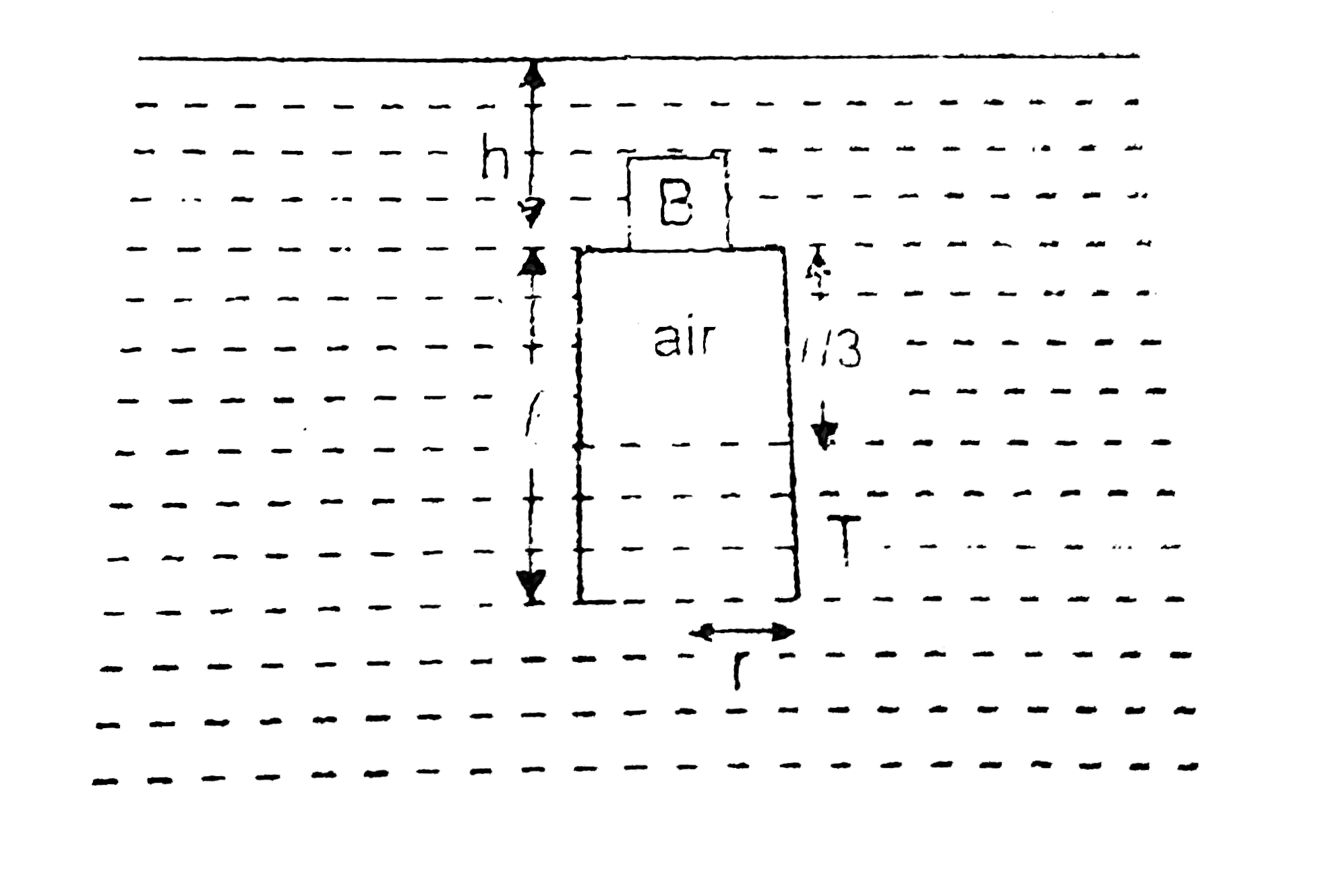A steel tube of length 1.00 m is struck at one end. A person with his ear close to the other end hears the sound of the blow twice one travelling through the body of the tube and the other through the air in the tube. Find the time gap between the two hearings.
The correct Answer is:B
To solve the problem of finding the time gap between the two sounds heard by a person at the end of a steel tube when it is struck, we can follow these steps:
Step 1: Identify the speeds of sound in different mediums
- The speed of sound in air is approximately vair=330m/s.
- The speed of sound in steel is approximately vsteel=5200m/s.
Step 2: Determine the length of the tube
- The length of the steel tube is given as L=1.00m.
Step 3: Calculate the time taken for sound to travel through air
- The time taken for sound to travel through air can be calculated using the formula:
tair=Lvair=1.00m330m/s≈0.00303s
Step 4: Calculate the time taken for sound to travel through steel
- The time taken for sound to travel through steel can be calculated using the formula:
tsteel=Lvsteel=1.00m5200m/s≈0.000192s
Step 5: Calculate the time gap between the two sounds
- The time gap Δt between the two sounds is given by:
Δt=tair−tsteel
Substituting the values we calculated:
Δt=0.00303s−0.000192s≈0.002838s
Step 6: Convert the time gap to milliseconds
- To express the time gap in milliseconds, we multiply by 1000:
Δt≈0.002838s×1000≈2.838ms
Final Answer
The time gap between the two hearings is approximately 2.84ms.
---
- The speed of sound in air is approximately vair=330m/s.
- The speed of sound in steel is approximately vsteel=5200m/s.
- The length of the steel tube is given as L=1.00m.
- The time taken for sound to travel through air can be calculated using the formula:
tair=Lvair=1.00m330m/s≈0.00303s
- The time taken for sound to travel through steel can be calculated using the formula:
tsteel=Lvsteel=1.00m5200m/s≈0.000192s
- The time gap Δt between the two sounds is given by:
Δt=tair−tsteel
Substituting the values we calculated:
Δt=0.00303s−0.000192s≈0.002838s
- To express the time gap in milliseconds, we multiply by 1000:
Δt≈0.002838s×1000≈2.838ms
The time gap between the two hearings is approximately 2.84ms.
Topper's Solved these Questions
Similar Questions
Two persons stand near a railway line separated by a distance 2 km. A detonator is exploded by the first person. The second person 2 km away hears two sounds, one from the sound that has travelling through the rail and the other through the air. What is the interval between them? Given Young's modulus of steel =2×1011N/m2. Density of steel = 8000 kg/m3. Density of air = 1.29 kg/m3. Atmospheric pressure =1×102N/m2. y for air = 1.4
View SolutionA steel bolt is insertede into a copper tube as shown in the figure. Find the forces induced in the bolt and in the tube when the nut is turned through one revolution. Assume that the length of the tube is l, the pitch of the bolt thread is h and the cross sectional areas of the steel bolt and the copper tube are As and Ac respectively.

View SolutionA narrow tube 50 cm length is closed at one end contains air trapped by a certain column of Hg. When the tubes is held horizontally, the air column in if has a length of 10cm. What is the pressure exerted by air when the tube is held vertically with the open end at the bottom and the length of the air column is 15cm? Also find the vertical height of the mercury column inside the tube.
View SolutionA tube of length L is filled completely with an incompressible liquid of mass M and closed at both the ends. The tube is then rotated in a horizontal plane about one of its ends with a uniform angular velocity ω. The force exerted by the liquid at the other end is
View SolutionLength of the horizontal arm of a uniform cross - section U - tube is l = 5 cm and both ends of the vertical arms are open to the surrounding pressure of 7700 N m−2. A liquid of density ρ=103 kg m−3 is poured into the tube such that the liquid just fills the horizontal part of the tube. Now, one of the open ends is sealed and the tube. Now, one of the open ends is sealed and the tube is then rotaed about a vertical axis passing through the other veritcal arm with angular velocity ω due to which the liquid rises up to half the length of the vertical arm. If length of each vertical arm is a = 6 cm. What is the value of ω(in rad s−1)?

View SolutionIn given figure, A uniform cylindrical tube closed at one end, contains a pallet of mercury 5cm long. When the tube is kept verticaly with the closed end downward, the length of the air column trapped is 30cm. Now the tube is inverted so that the closed end goes up find the new length of the air column trapped. atmospheric pressure =75cm of mercury. (Assume temperature remains constant in this process)

View Solutiontwo pipes have each of length 2 m, one is closed at on end and the other is open at both ends. The speed of sound in air is 340 m/s . The frequency at which both can resonate is ?
View SolutionTwo loudspeakers are arranged facing each other at some distance. Will a person standing behind one of the loudspeakers clearly hear the sound of the other loudspeaker or the clarity will be seriously damaged because of the 'collision' of the two sounds in between ?
View SolutionA tube 1.0m long is closed at one end. A stretched wire is placed near the open end. The wire is 0.3m long and a mass of 0.01kg . It is held fixed at both ends and vibrates in its fundamental mode. It sets the air column in the tube into vibration at its fundamental frequency by resonance. Find
(a) the frequency of oscillation of the air column and
(b) the tension in the wire.
Speed of sound in air = 330m/s .
View SolutionA light cylindrical tube 'T' of length l and radius 'r' containing air is inverted in water (density d). One end of the tube is open and the other is closed A block 'B' of density 2d is kept on the tube as shown in the figure. The tube stays in equilibrium in the position shown. (Assume the atmosphere pressure is to be P0)
Assume that density of air is very small than density of block and water. Pick up the correct statement (s)

View Solution
